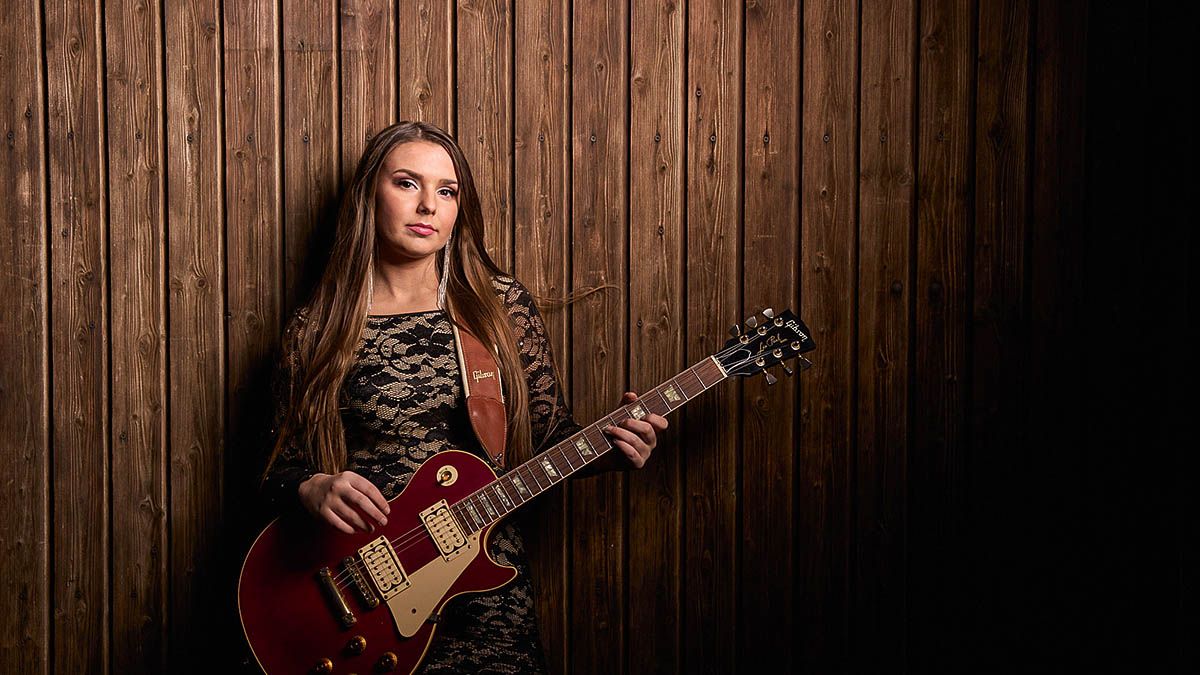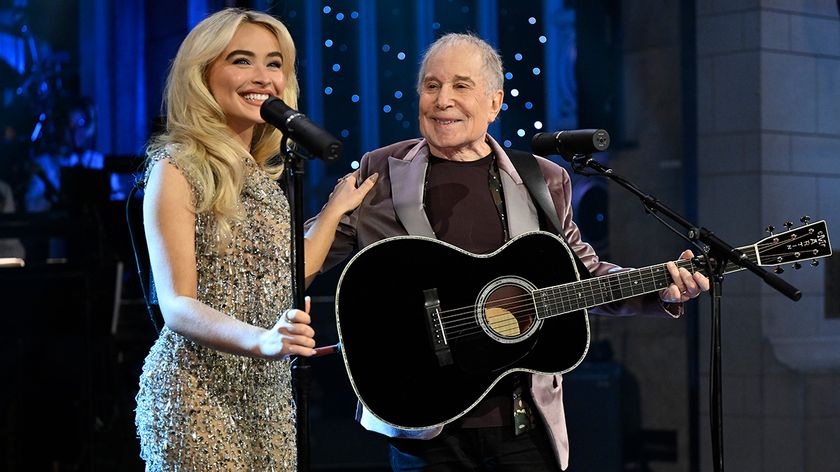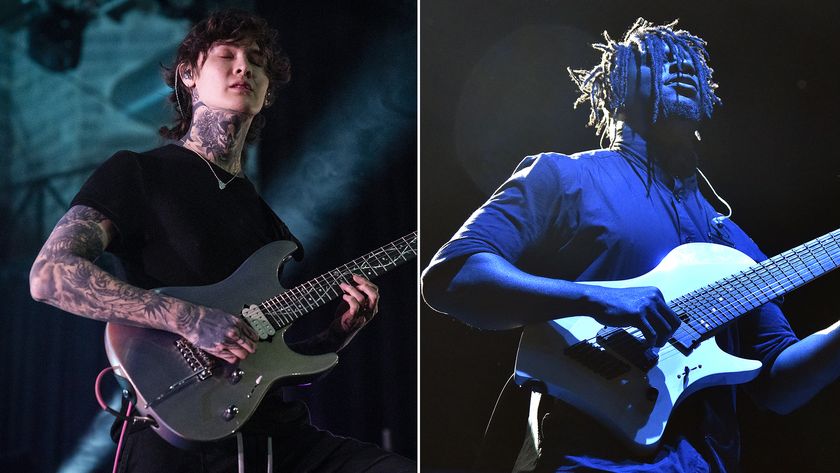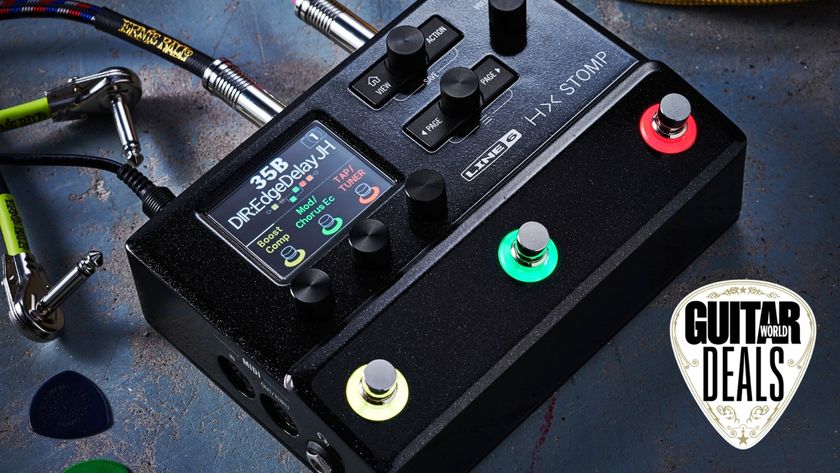Ally Venable on Les Pauls: “They’re not just one-trick ponies – if you experiment with the controls, you can get a lot of different tones out of them”
The Texan blues hot-shot talks Gibson's famous single-cut, the Wounded Warrior she calls her own and that time Billy Gibbons told her she was playing Sunshine of Your Love wrong

23-year-old Texan guitarist/vocalist Ally Venable is a rising star of contemporary blues music. Her new album features guest appearances from blues heroes Buddy Guy and Joe Bonamassa. She is also a fan of Gibson Les Paul legends Slash and Billy Gibbons...
“I think different guitars require a different approach to playing,” Ally says. “A Les Paul will make me do different things to the other guitars I started out with. When I graduated from high school my dad bought me a Limited Colours Edition Standard from 1990, which is the Magenta model I’ve been mainly using for the last four or five years.
“I love a good humbucker sound and you can hear how that guitar coming into [my] life actually changed the music I’ve been making. For some reason, the wiring is the wrong way round, so I’m actually on the bridge pickup with the selector up! I’ve gotten used to it now.
“I know some people find Les Pauls quite heavy, but mine is pretty light – I’d say around eight or so pounds, which means I can tour with it easily, especially when using a thicker strap. I call that guitar my ‘Wounded Warrior’ because I’ve dropped it so many times.
“The neck has been broken three different times – it’s never come clean off, thank god – but it’s needed a lot of repairs over the years. I know people always say once the neck has been broken they don’t want to play that Les Paul anymore, but I love mine... I’m gonna keep playing it until it’s completely destroyed. I guess I’m just super-destructive!
“I tend to play more aggressively on a Les Paul, but it still sounds expressive. I love how it feels in my hands, it’s almost like I can do anything. It’s a very unique feel compared to all the other guitars. They definitely seem to inspire heavier riffs and more guitar-based songwriting, at least for me.
“But they’re not just one-trick ponies – if you experiment with the controls, you can get a lot of different tones out of them, even funky ones if you’re in the middle position. I actually tend to leave my guitar on the bridge pickup all the time. It’s my favourite sound because it always cuts through so well and the midrange sustain is always immaculate.
Get The Pick Newsletter
All the latest guitar news, interviews, lessons, reviews, deals and more, direct to your inbox!
“For modern blues that has a bite to it, and even heavier rock, that’s what I tend to go for. I pair my Les Paul with an Analog Man King of Tone, so I always know I’m in good hands with those two. Then I go into a boutique amp made by Category 5 who are based in Dallas. I ran into the owner at a guitar festival because he’d supplied the backline and was blown away. They make great 6L6-style amps.
“When it comes to Les Paul influences, Joe Bonamassa is a big inspiration to me. I’m grateful to now call him my friend – he’s been very supportive of me and my music, and our entire blues community as a whole. He’s a big hero of mine and I actually have a new album coming out called Real Gone where he guested on one of the tracks, Broken and Blue. I wasn’t actually in the studio with him when he did it, but we sent the track over and he sent his parts right back. It sounded so good!
“Slash is another big hero of mine – he’s like the staple! Whenever I think of a guitar player holding a Les Paul, I think of Slash. I met him very briefly at a Gibson event at one of the NAMM shows. There were only a few dressing rooms backstage, so they kinda piled all of the artists in them. He was in the same one as me for a while, so I got to say hi.
“He was really tall – I did not expect that, but he is huge! I also met Billy Gibbons there, too. I was playing Sunshine of Your Love up high on my Les Paul. He asked if he could see my guitar and then told me I should play it slower and in the lower register using barre chords. I was playing it an octave up and too fast. Then he told me about using low-gauge strings, gave me some of his hot sauce and left!”
- Real Gone is out now via Ruf.
Amit has been writing for titles like Total Guitar, MusicRadar and Guitar World for over a decade and counts Richie Kotzen, Guthrie Govan and Jeff Beck among his primary influences as a guitar player. He's worked for magazines like Kerrang!, Metal Hammer, Classic Rock, Prog, Record Collector, Planet Rock, Rhythm and Bass Player, as well as newspapers like Metro and The Independent, interviewing everyone from Ozzy Osbourne and Lemmy to Slash and Jimmy Page, and once even traded solos with a member of Slayer on a track released internationally. As a session guitarist, he's played alongside members of Judas Priest and Uriah Heep in London ensemble Metalworks, as well as handled lead guitars for legends like Glen Matlock (Sex Pistols, The Faces) and Stu Hamm (Steve Vai, Joe Satriani, G3).

“I sang this song with George Harrison on Saturday Night Live in 1976”: Paul Simon teams up with Sabrina Carpenter for Simon & Garfunkel classic during SNL's 50th anniversary special

“Alien levels of precision. You can’t believe it until you sit in front of him and you’re like, ‘Whoa’”: We asked Tim Henson and Tosin Abasi who is blowing their minds right now. They both named the same guitarist
Most Popular









